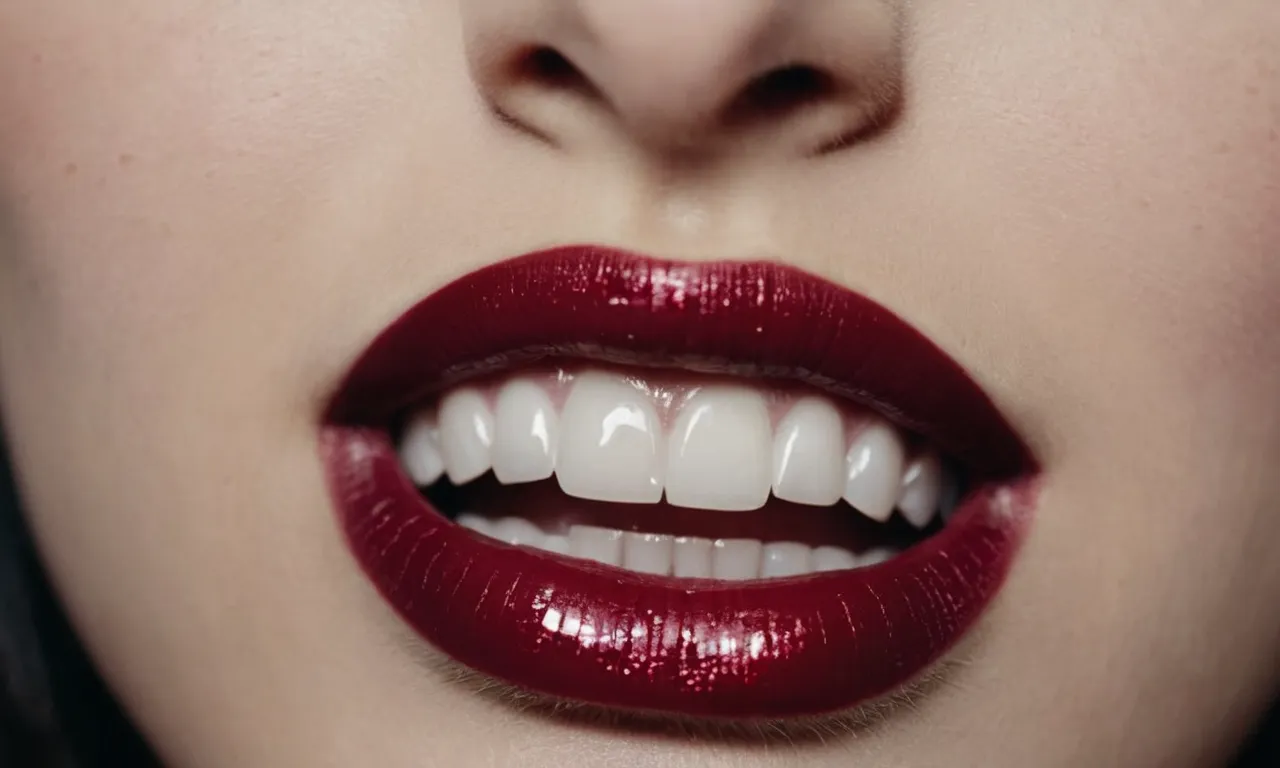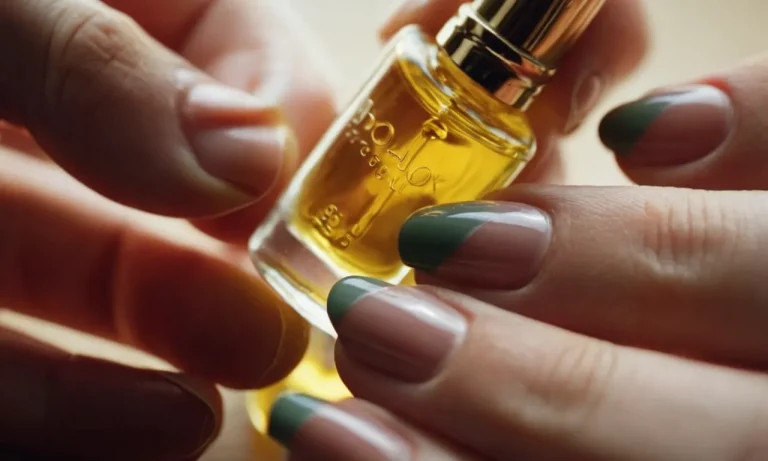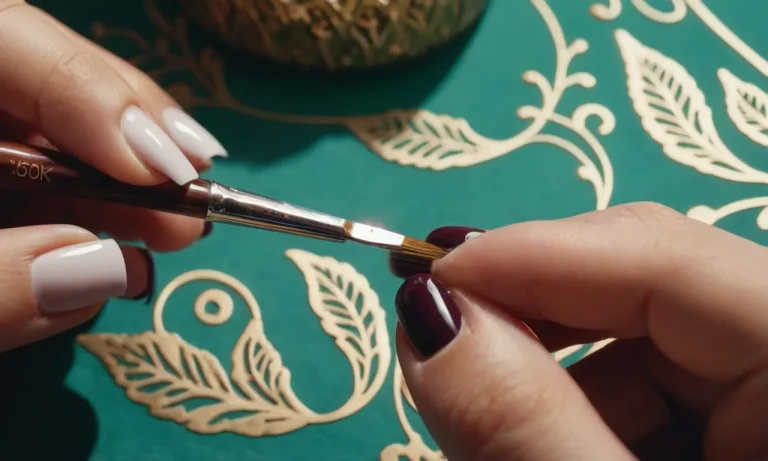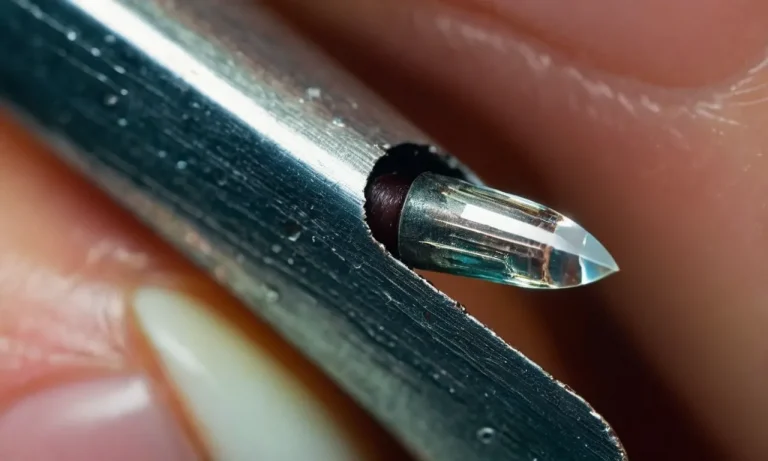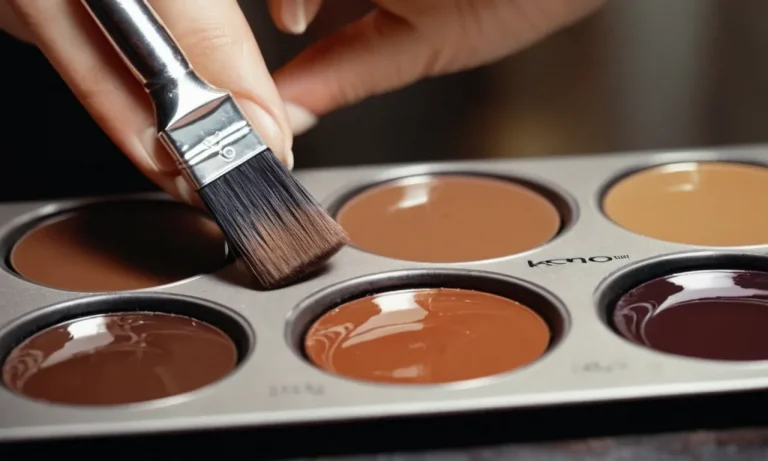What To Do If You Accidentally Get Nail Polish Remover In Your Mouth
Nail polish remover contains harsh chemicals like acetone that can be dangerous if swallowed. If you’ve accidentally gotten some in your mouth, don’t panic – here are some steps you can take to reduce the potential harm.
If you’re short on time, here’s a quick answer to your question: Rinse your mouth out immediately with water or milk and contact a poison control center or doctor right away. Do not swallow the nail polish remover.
In this comprehensive article, we’ll explore what can happen if you ingest nail polish remover, steps to take right away, when to see a doctor, how to prevent it from happening again, and answer other common questions around accidentally swallowing this product.
What Happens If You Swallow Nail Polish Remover?
Main Ingredients and Health Effects
The main ingredient in most nail polish removers is acetone, which is a harsh chemical that can irritate the skin and internal organs. Swallowing even a small amount of pure acetone can cause burns in the mouth, throat, and stomach.
Larger amounts can make you sick to your stomach, cause vomiting, abdominal pain, dizziness, and even chemical pneumonia if inhaled into the lungs.
Some nail polish removers also contain ethyl acetate or isopropyl alcohol. These are less toxic than acetone but can still cause vomiting, drowsiness, and eye irritation if swallowed. The severity of symptoms depends on the amount swallowed and how quickly it is diluted by drinking fluids.
Amount Swallowed Matters
A small sip or taste of nail polish remover will likely just cause mouth and throat irritation. But swallowing several mouthfuls can cause much more severe effects like chemical burns, vomiting, coughing, and drowsiness.
Children are at higher risk for accidental poisoning since only a small amount can make them quite ill.
According to the American Association of Poison Control Centers, there were over 6,000 cases of nail polish remover poisoning in 2020. Most resulted in only minor symptoms, but some did require hospitalization.
So always call poison control if you suspect someone has swallowed more than a taste of remover.
Symptoms
Within the first several hours after swallowing nail polish remover, common symptoms can include:
- Burning pain in the mouth, throat, and abdomen
- Coughing or choking from chemical inhalation
- Nausea and vomiting
- Dizziness, drowsiness, and confusion
- Severe abdominal pain or diarrhea
More dangerous effects like chemical pneumonia, respiratory failure, or organ damage can occur after large ingestions. Seek emergency medical help if symptoms are severe or become worse rather than improving over time.
With prompt care, most cases of nail polish remover poisoning have a good outcome and recovery.
What to Do Right Away If You Get Nail Polish Remover in Your Mouth
Rinse Mouth Thoroughly
If you’ve accidentally gotten nail polish remover in your mouth, the first thing you’ll want to do is rinse your mouth out thoroughly. This helps dilute the chemical and prevent further exposure. Rinse several times with water or a bland liquid like milk.
Be sure to swish the liquid around your mouth to reach all areas. Rinsing right away can help minimize irritation and damage.
Drink Milk or Water
After rinsing, continue drinking liquids like milk or water. These help dilute any remaining nail polish remover and support mouth health. Milk in particular can help soothe irritation. Sip liquids slowly rather than gulping them down.
This gives your mouth more time to benefit from the dilution effects.
Try to avoid swallowing the liquids you rinse with, as they may contain traces of nail polish remover. Instead, spit them out gently after swishing. But if you do swallow a bit by accident, drinking extra water can help minimize any effects.
Contact Poison Control or Doctor
Depending on the amount of nail polish remover ingested, you may need medical attention. Call poison control or your doctor right away if you’ve swallowed more than a small sip. Signs you need urgent care include:
- Burning or pain in mouth, throat, lips or tongue
- Nausea, vomiting or trouble swallowing
- Coughing, choking or shortness of breath
- Dizziness, confusion or other concerning symptoms
Poison control can advise you on first aid steps and whether you need to go to the ER. Be prepared to give details about the product, amount swallowed and current symptoms. Your doctor can examine you and provide supportive treatments as needed.
With quick action, most minor nail polish remover exposures resolve without complications. But severe cases can cause serious damage, so don’t hesitate to get medical help if concerns arise after accidental ingestion.
When to Go to the Emergency Room
Accidentally ingesting nail polish remover can be scary, but try to remain calm. In most cases, drinking a small amount of remover won’t cause serious or long-term health issues. However, there are some situations where you’ll need to seek emergency medical care right away:
Signs of Respiratory Distress
Nail polish remover contains chemicals like acetone, ethyl acetate, and butyl acetate which can irritate the throat and lungs if swallowed. Watch for signs of respiratory distress such as:
- Wheezing or difficulty breathing
- Tightness in the chest
- Gasping for air
- Blue tinge to lips or fingernails (cyanosis)
If you experience any of these symptoms, call 911 or have someone drive you to the nearest emergency room immediately. Respiratory distress indicates your airways are obstructed or inflamed and you’ll need rapid medical intervention.
Signs of Stomach or Gastrointestinal Issues
Drinking more than a taste of remover may result in irritation, swelling, or chemical burns along your esophagus and stomach lining. Seek emergency care if you experience:
- Severe abdominal pain
- Repeated vomiting
- Blood in your vomit or stools
- Inability to keep down fluids
These signs can indicate a perforation (hole), bleeding ulcer, or dangerous inflammation in your GI tract. The longer these issues go untreated, the higher your risk for sepsis so prompt medical care is critical.
Signs of Altered Mental Status
Nail polish remover affects your central nervous system. In some cases, ingesting even a small amount can cause issues like:
- Confusion
- Dizziness
- Drowsiness
- Agitation
- Seizures
- Loss of consciousness
Rapid changes in mental status after swallowing remover require emergency medical care. This indicates the chemicals are being rapidly absorbed into your bloodstream and affecting your brain function.
Large Amount Ingested
As a general rule, if you’ve ingested more than a taste or sip of nail polish remover, go to the ER. The larger the amount swallowed, the higher your risk for potentially dangerous health effects. Some life-threatening complications like coma, organ damage, respiratory failure, or cardiac arrest can occur after drinking several ounces.
Don’t try to “wait it out” at home if you’ve consumed more than a tiny taste. Call 911 or have someone drive you to an emergency room right away so you can be monitored and treated.
When in Doubt, Seek Medical Attention
Accidentally drinking nail polish remover can be alarming. Don’t hesitate to go to the emergency room or call your local poison control center if you have any doubts or concerns. It’s always better to be safe than sorry when it comes to ingesting dangerous household chemicals.
With prompt medical care, most minor cases of nail polish remover ingestion resolve with no lasting effects. However, severe complications can develop rapidly so seek help immediately if you experience concerning symptoms.
Preventing Accidental Ingestion
Store Nail Polish Remover Safely
Nail polish remover should always be stored safely, especially if you have small children at home. The best place to keep it is up high in a locked cabinet or on a shelf out of reach of little hands. Make sure the bottle is securely closed after every use.
An accidental spill could be dangerous if a child thinks the liquid is something tasty to drink.
You may also want to keep nail polish remover in a closet or bathroom cupboard instead of having it sit out on a counter or dresser. Bathrooms often have locks on the doors as an added safety measure. Just be sure to keep the door closed and locked when not in use.
Supervise Children
Carefully supervise young children whenever nail polish remover is being used. Do not allow them to play with or handle the bottle. Explain that this is something only used for nails and can make them sick if put in the mouth.
Give older children gentle reminders as well to never taste the liquids or use them unsupervised.
If you have a helper with you, have one adult focus on the task of removing nail polish while the other keeps a watchful eye on the children. Accidents can happen quickly, so having an extra set of eyes around is wise.
Transfer to Childproof Container
Consider transferring your nail polish remover from the original bottle into a childproof container. This adds an extra barrier of protection in case a bottle gets left out accessible to kids. Childproof caps are more difficult for little hands to open.
Be sure to mark the new container by attaching a label that says “nail polish remover” so products do not get mixed up. Keep it stored safely like you would the original bottle. Having that secondary locking cap helps minimize the risk of accidental exposure.
Frequently Asked Questions
How much nail polish remover is dangerous?
The amount of nail polish remover that can be dangerous depends on factors like the concentration of acetone or other solvents, the size and age of the person who ingested it, and whether it was swallowed or got into the lungs. Here are some general guidelines:
- For an adult, ingesting more than a mouthful could potentially cause toxicity. Drinking several ounces may lead to more serious effects.
- For a child, even a small amount like a teaspoon could be toxic. Children are more vulnerable due to their smaller body size.
- High-concentration acetone formulas are more hazardous than diluted versions or those containing less potent solvents.
- Getting remover into the lungs, like from breathing in fumes or accidentally inhaling some liquid, heightens the risk of chemical pneumonia and other lung inflammation.
If you suspect someone has ingested enough remover to be dangerous, call Poison Control right away at 1-800-222-1222 for treatment guidance.
What happens if a child drinks nail polish remover?
If a child accidentally drinks nail polish remover, it can cause serious health effects, but the severity depends on the amount swallowed and how quickly it is treated. Here’s what to expect:
- Small amounts may cause mouth and throat irritation, stomach upset, drowsiness, or dizziness.
- Larger ingestions can result in coughing, vomiting, wheezing, chemical pneumonia if inhaled, blindness or kidney problems.
- Without rapid treatment, high doses can lead to respiratory failure, coma, seizures, or even death.
If you suspect a child has swallowed remover, call 911 or Poison Control (1-800-222-1222). They may advise inducing vomiting unless the child is having seizures or is too drowsy.SEEK EMERGENCY CARE to evaluate respiratory issues and provide oxygen or drugs to prevent permanent damage.
Can you die from drinking nail polish remover?
Yes, it is possible to die from drinking nail polish remover. Because products like acetone are caustic chemicals, ingesting more than a small amount can be potentially lethal. Here’s how it can turn fatal:
- Swallowing large volumes can quickly cause airway obstruction, respiratory failure, coma, and death.
- Aspiration into the lungs can result in deadly chemical pneumonia and swelling.
- Severe poisoning leads to seizures, arrhythmias, kidney failure, and cardio-respiratory arrest.
The amount needed to be deadly depends on the concentration, the person’s size, and how quickly medical treatment is given. But outcomes are often good with fast intervention, so call 911 or Poison Control (1-800-222-1222) if poisoning is suspected.
How long do the effects last?
The duration of symptoms after swallowing nail polish remover depends on the severity of the exposure. Here’s a general timeline:
- Minor exposure: Irritation, nausea, and dizziness may last for a few hours.
- Moderate ingestion: Effects like vomiting, coughing, and drowsiness could persist for 12-24 hours.
- Major poisoning: Severe effects may last for several days if there is lung damage or other complications.
With prompt treatment like oxygen, IV fluids, and drugs to prevent chemical pneumonitis, outcomes are often very good. But monitor the person closely for at least 6 hours after ingestion, and seek emergency care if breathing problems develop.
Conclusion
Accidentally ingesting nail polish remover can be frightening. Fortunately, by acting quickly to dilute it and seeking medical advice, you can reduce potential harm. Always store nail care products safely out of reach of children and supervise usage.
If swallowed, rinse repeatedly with water or milk, and contact poison control or a doctor right away. With prompt action, the prognosis is often good.

